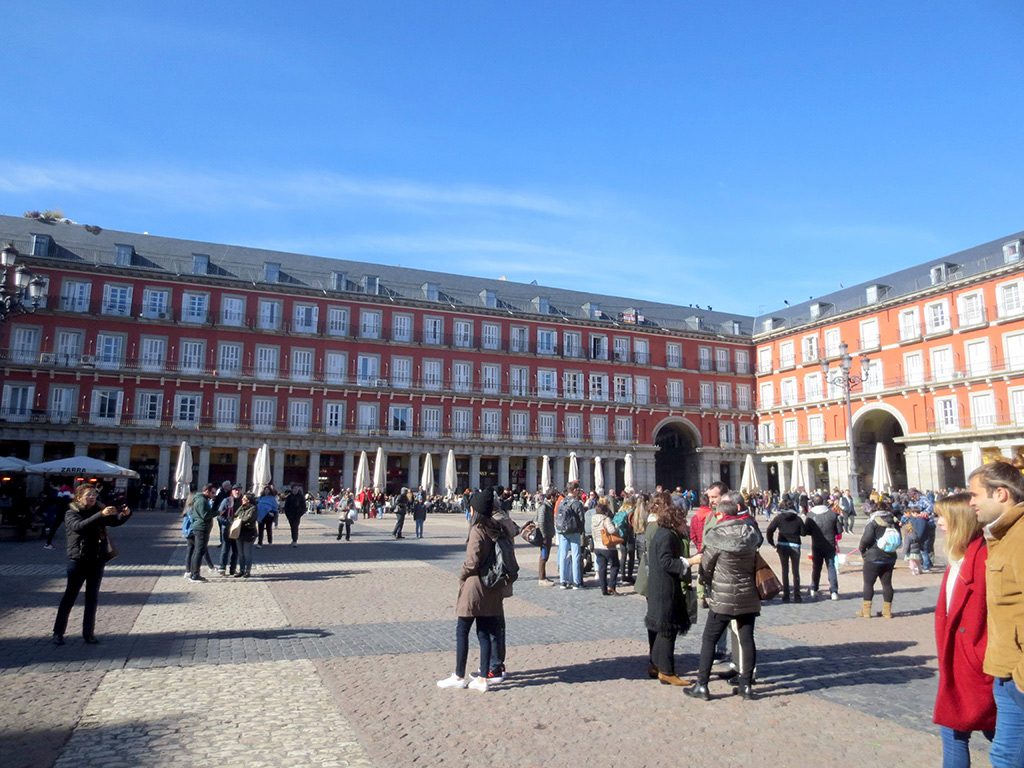
At the tail end of our trip to Valencia and Malta we enjoyed a brief layover in Madrid. Although we were tired from our flight and sad to be on our way home, we took full advantage of our two days to see some great art and get a small taste of the huge city.
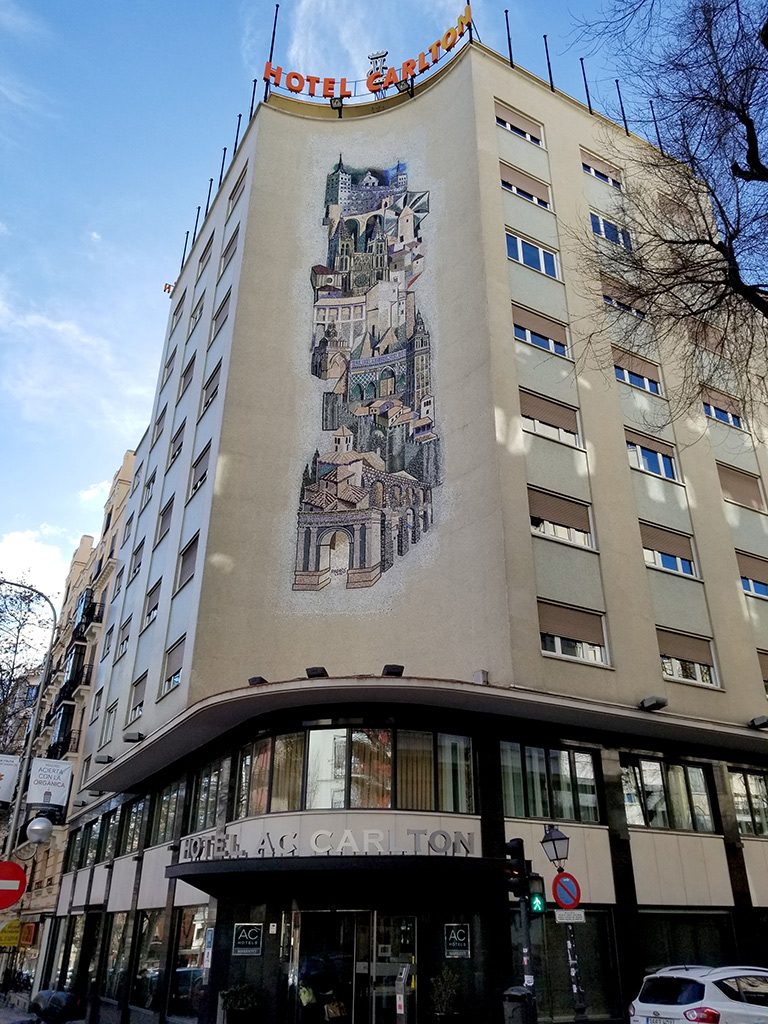
For maximum convenience on our short stay we booked at the AC Carlton Hotel in the Centro district, located a short walk from both Atocha train station (where there are express buses to the airport) and the major art galleries we wanted to see.
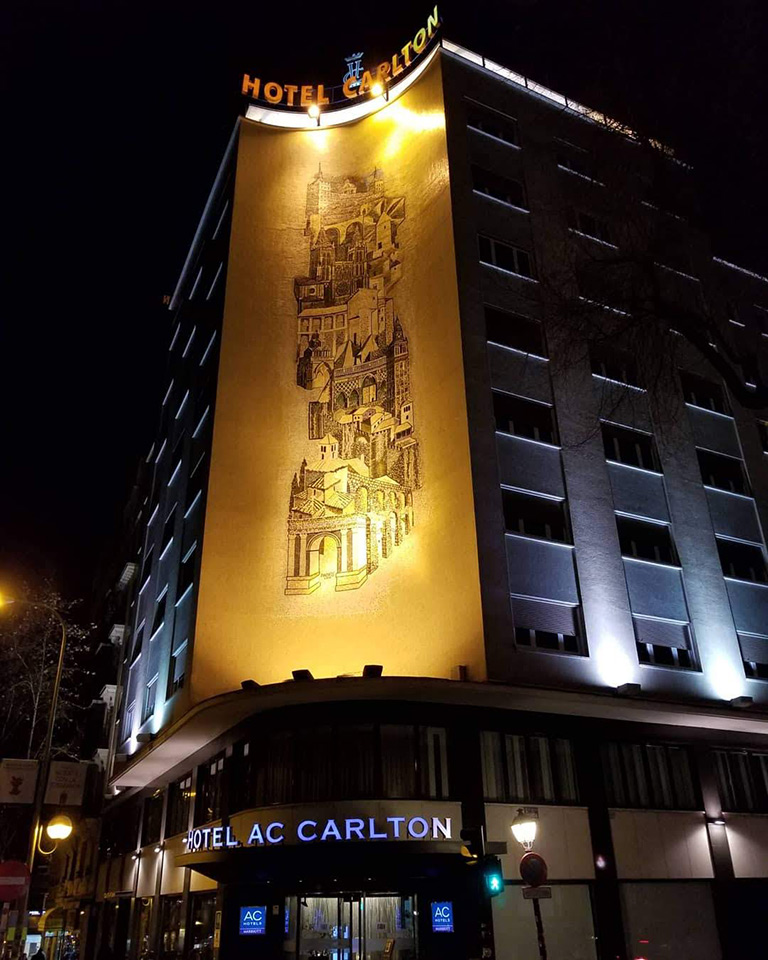
The hotel was not super trendy but it was well-run and the rooms were comfortable with lots of nice details. The outside of the building also had a cool retro-style mosaic mural.
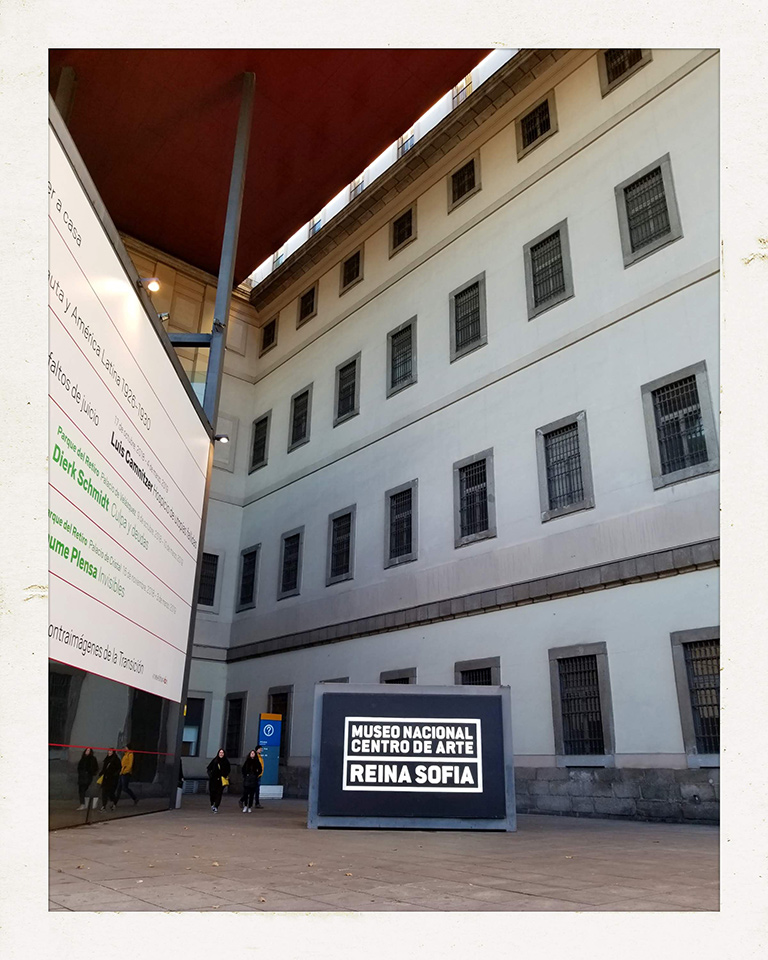
After getting settled, our first stop was the Museo Reina Sofia, Spain’s primary museum for 20th century and modern art. The main draw for this museum is Picasso’s famous Guernica. Photographs of the painting were not allowed, but it was nicely displayed in context along side other art related to the Spanish Civil War, the rise of fascism, and the bombing of the Basque city of Guernica in 1937.

The painting itself is surprisingly large and makes an impact. We also wandered through some other odd but interesting modern art, including Ree Morton’s “To Each Concrete Man” completed in 1974.
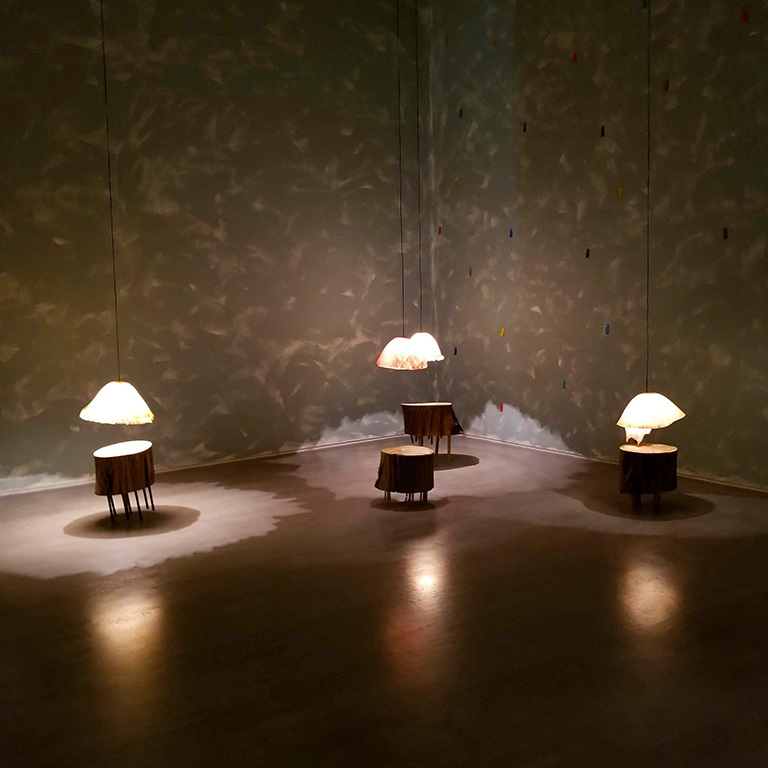
There were also a number of works by the ever-provocative and surreal Salvador Dali.
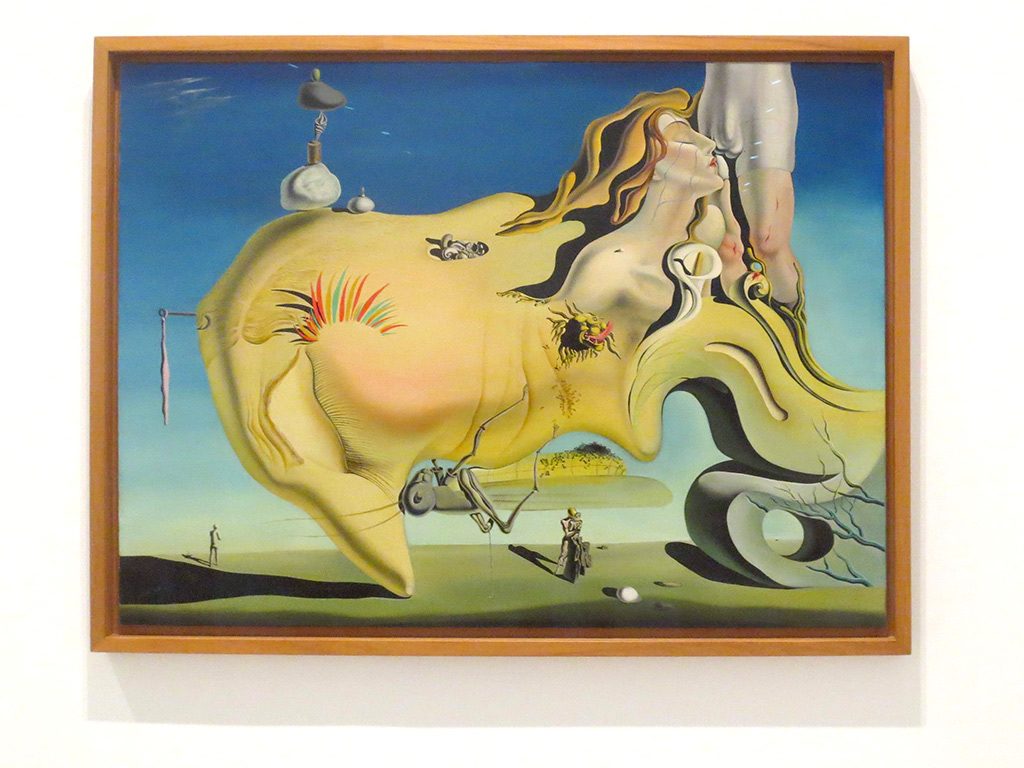
In the courtyards outside the modern expansion to the museum was additional artwork — including a sculpture by Roy Lichtenstein — and a glimpse into a nice looking reading room in the Reina Sofia’s library.
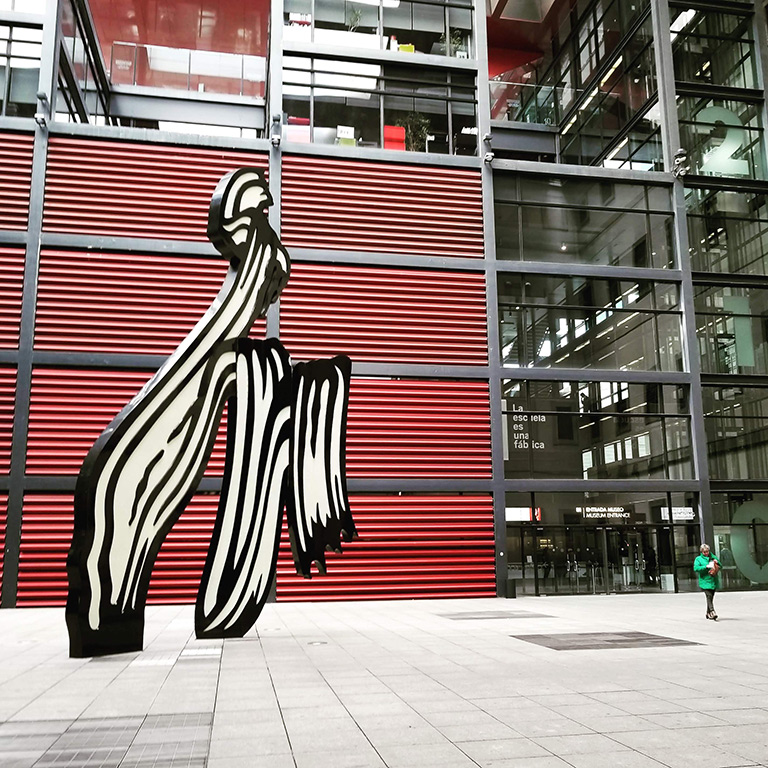
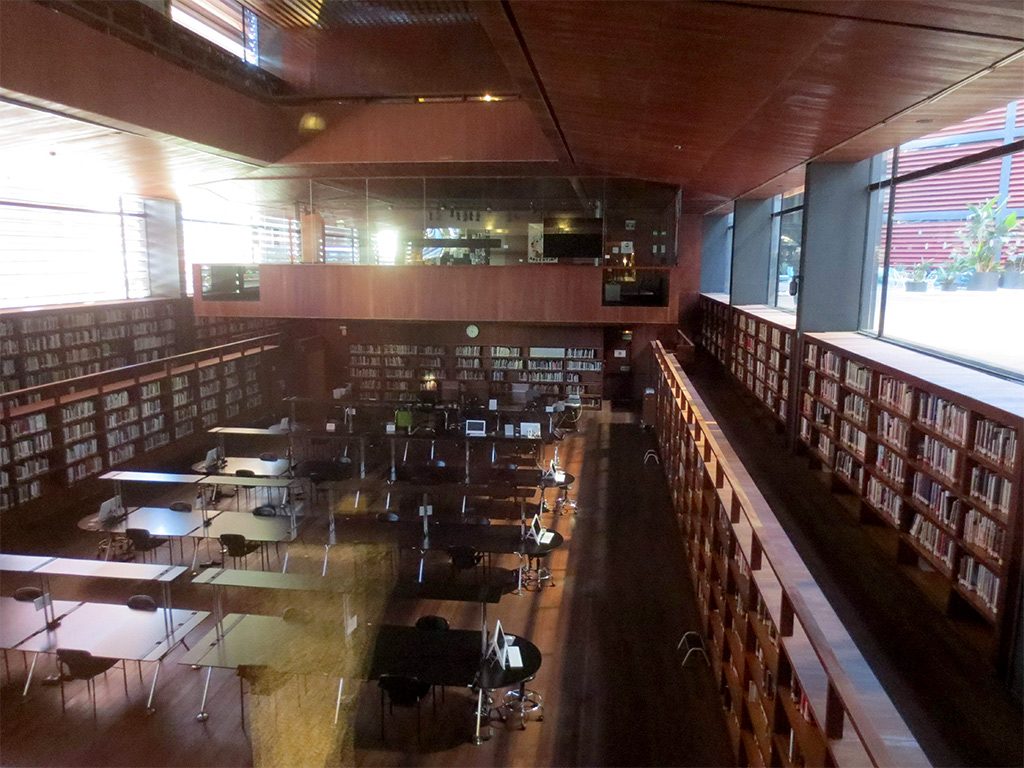
The next day we visited the Museo del Prado, the most famous art museum in Spain. Unfortunately the outside of the enormous building was being renovated. Although they’d covered it in colourful hording the stately presence of the building was diminished.
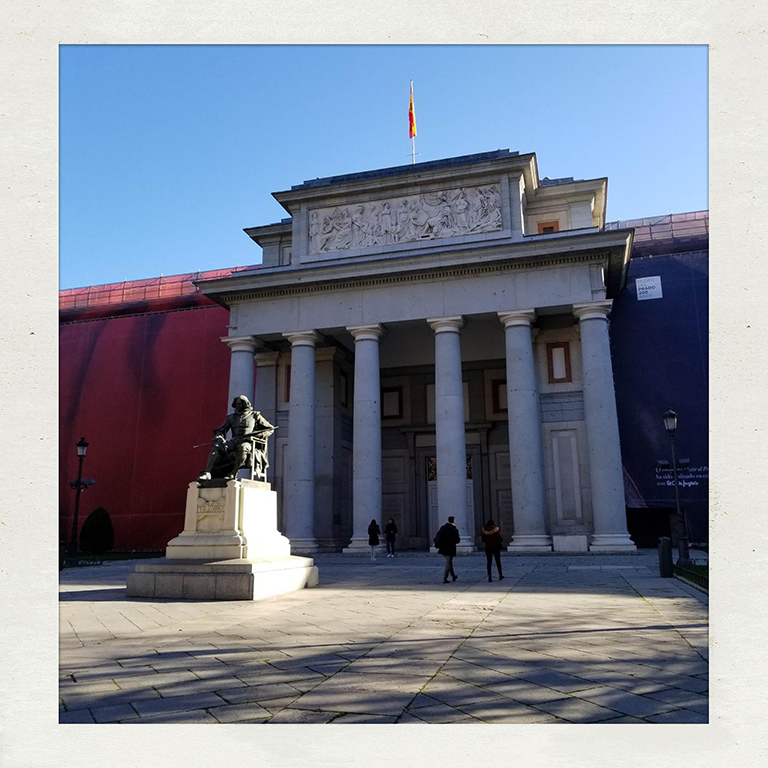
Inside, however, the collections were still crammed with famous masterpieces. The galleries were very crowded and no photos were permitted, but with some advanced planning we managed to see a number of great works including Hieronymus Bosch’s Garden of Earthly Delights, Albrecht Dürer’s Self Portrait at 26, and Diego Velázquez’s Las Meninas. We also saw Francisco Goya’s terrifying Black Paintings that he had painted on the walls of his house shortly before his death in 1828. They were later transferred to canvas.
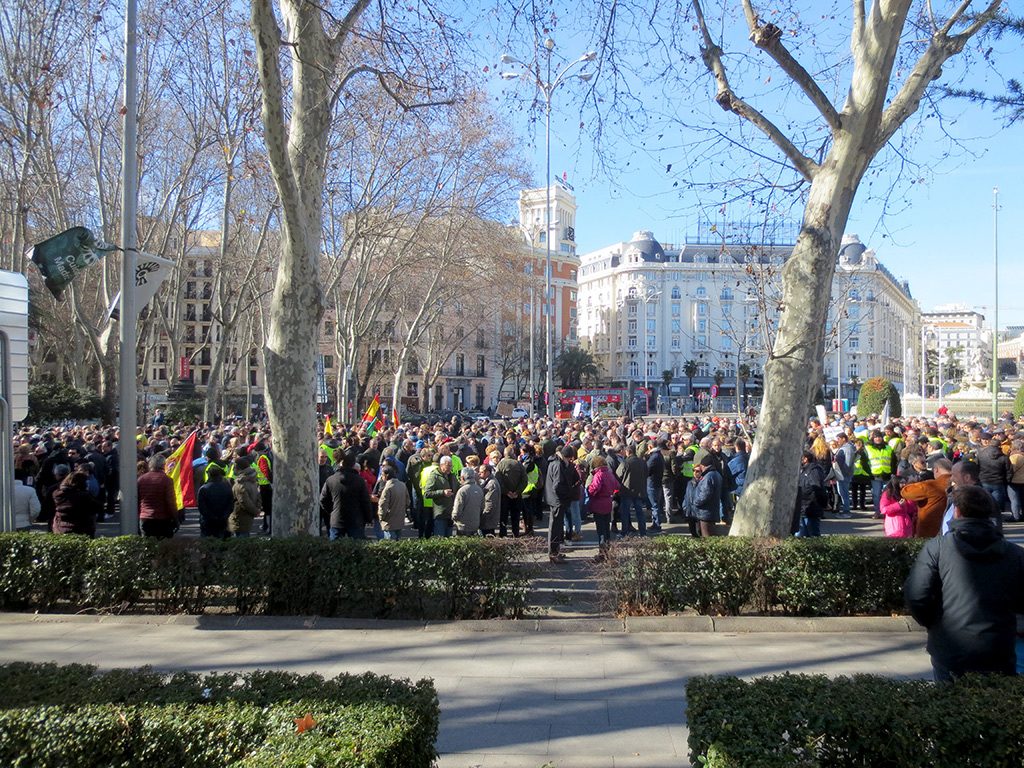
Upon leaving the Prado, we found our planned route obstructed by a very large protest. We knew from our arrival that all the taxi drivers in Madrid were on strike to protest Uber and other rideshare services — this had impacted us slightly as the airport express bus was much busier than normal.
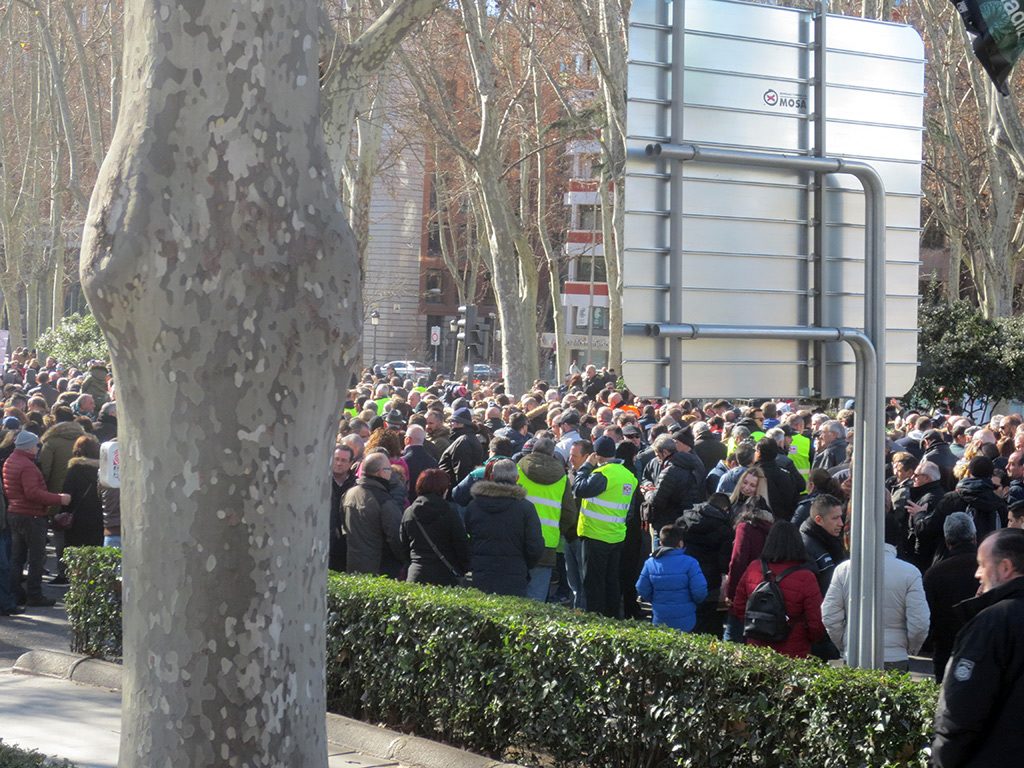
It turns out there was also a mass protest related to public pensions. This particular protest seemed to be an amalgamation of people supporting both causes. Normally I would avoid photographing protests while traveling, but this one seemed calm and organized.
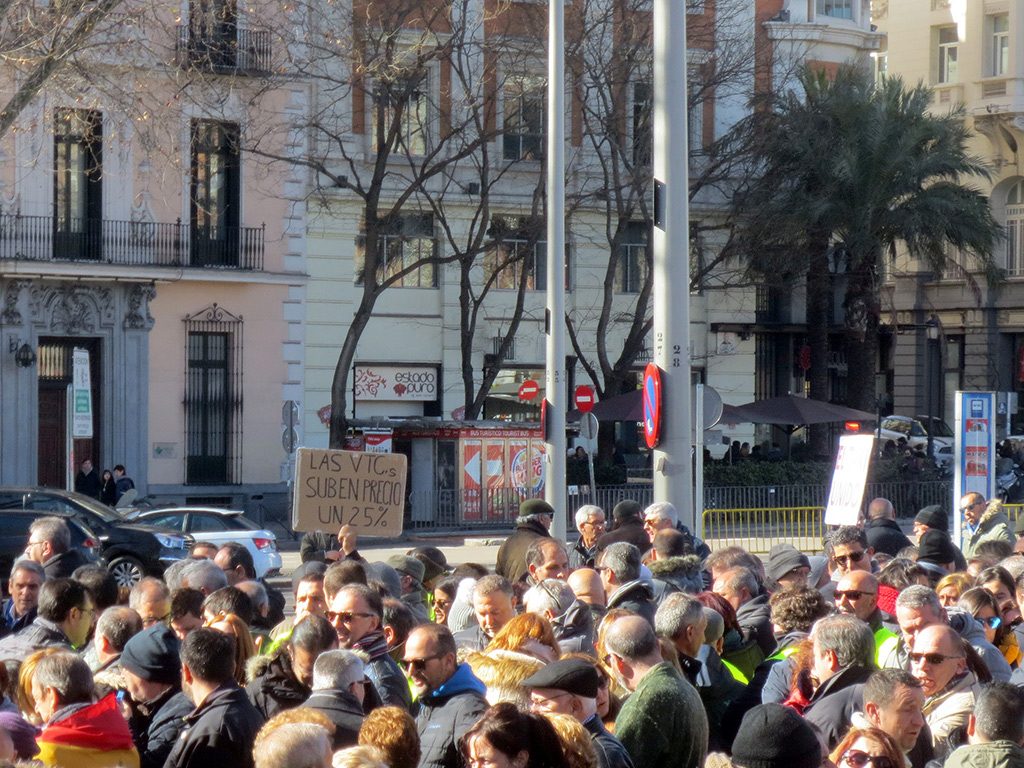
We skirted around the protest by circling around the imposing Plaza de Neptuno fountain and headed on towards two of the major public squares in Madrid, Puerta del Sol (the geographical centre and “kilometre zero” of Spanish roads) and Plaza Mayor.
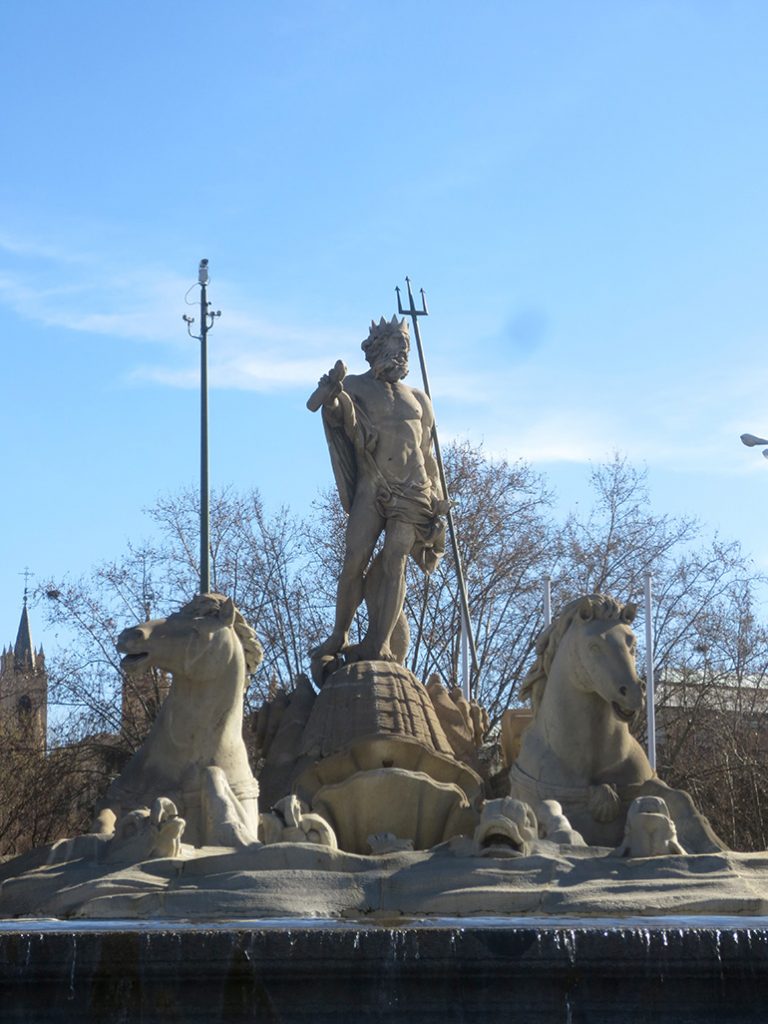
It wasn’t long before we encountered another protest, this one marching towards the one we’d just circumvented.
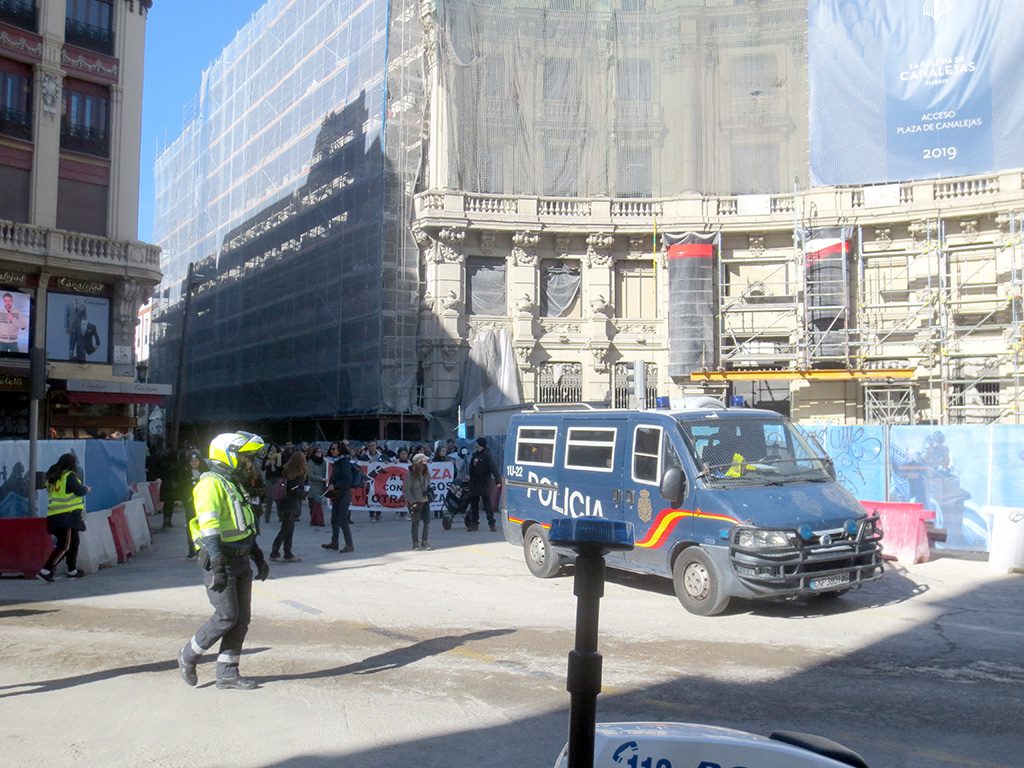
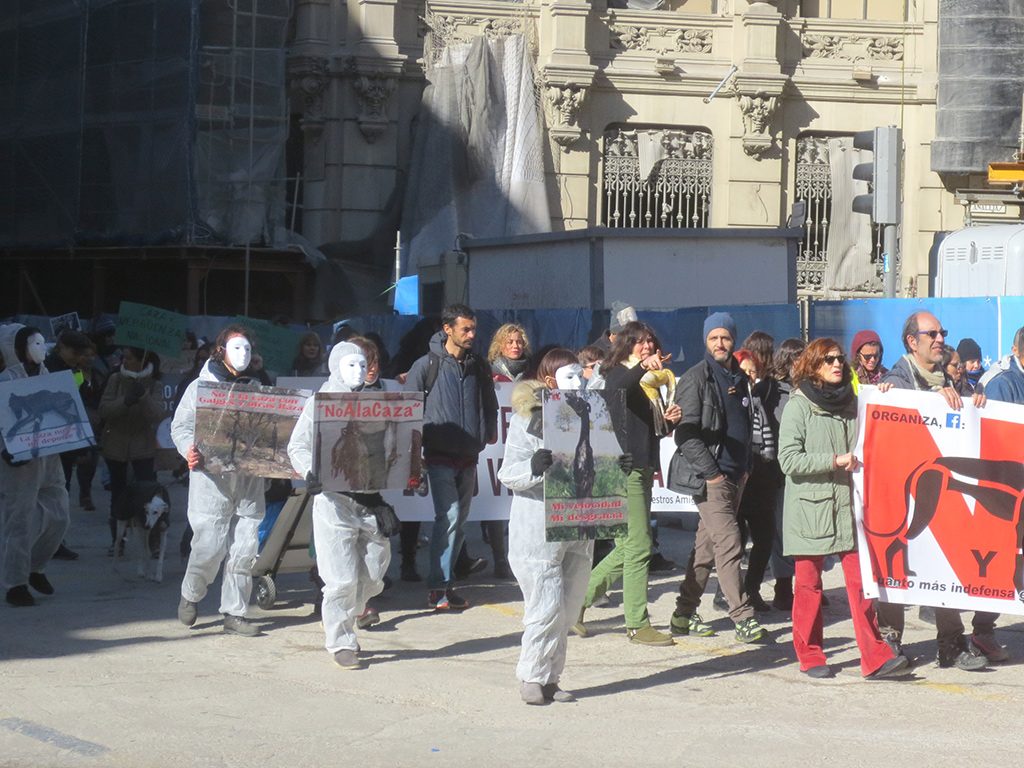
This protest turned out to be for an entirely different cause altogether, one in support of veganism and against cruelty to animals. It was also very organized, with police escorting it in the front and a cleanup crew following behind. The participants handed us a flyer on the way by. There was a sense that these protests were not exceptional or out of the ordinary but rather a part of life in Madrid.
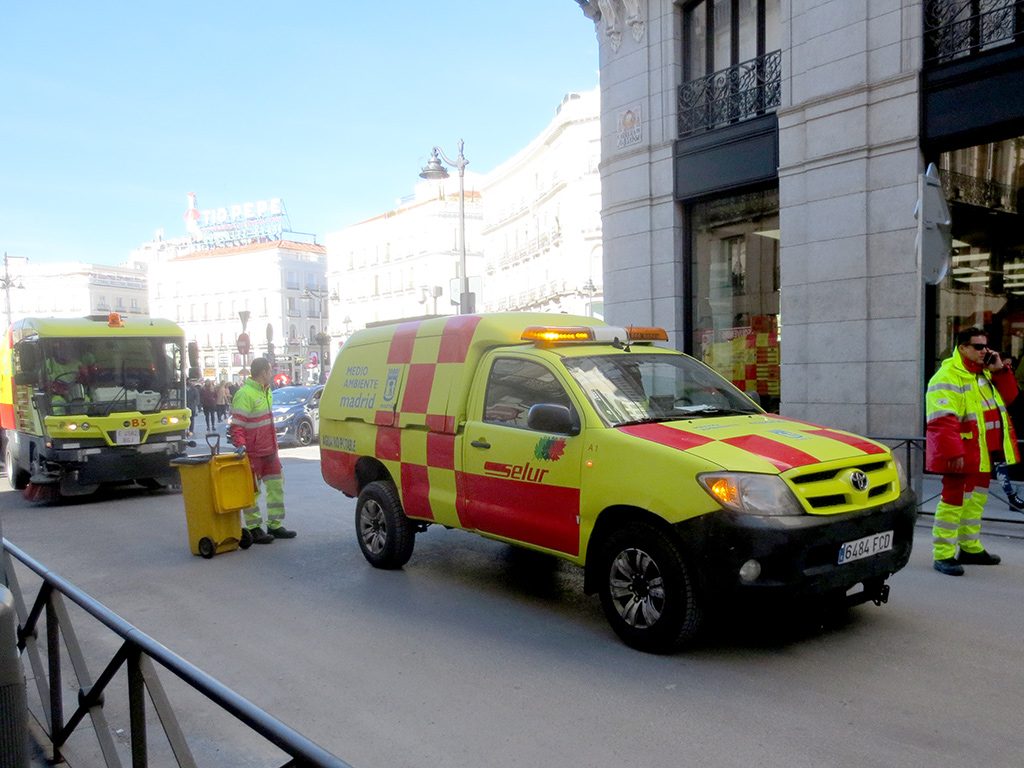
We eventually made it to Peurta del Sol and didn’t like it very much. Like Dundas Square in Toronto, it was crowded with people lurking but there was nothing much aside from a variety of street buskers, including many in Disney costumes. We were hesitant to take photos of them being aware of similar buskers becoming aggressive if they think you’re photographing them without paying. We did, however, get a nice photo of the historic Tio Pepe sign looming above the square.
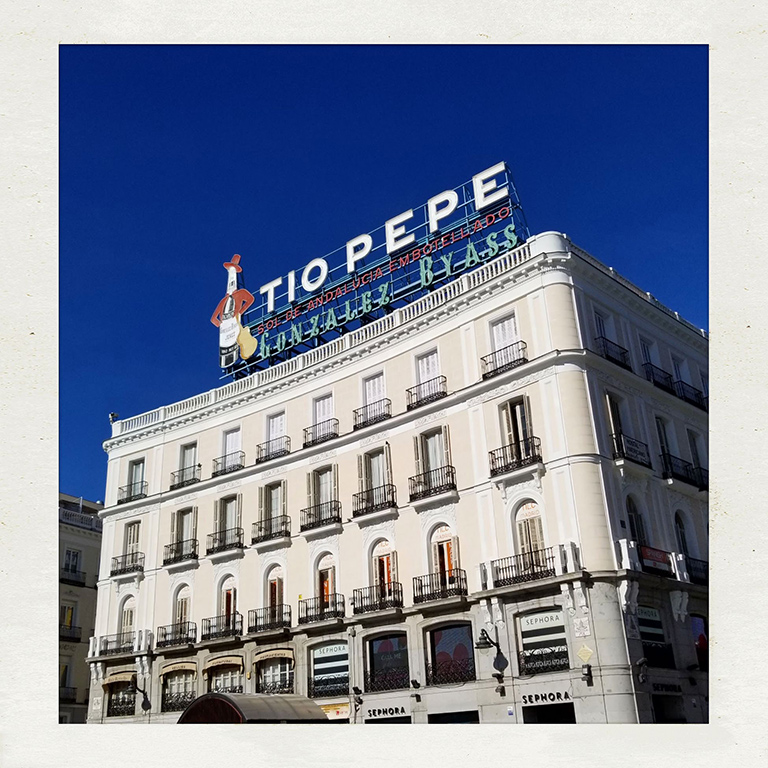
Tio Pepe is a famous brand of Spanish sherry. The neon sign has been in the square since 1936 except for a brief stint between 2011 and 2014 when it was removed for refurbishment. All other similar advertisements have been eliminated from the square but this one was permitted to remain due to its long history and “the amount of affection that has been demonstrated by the residents of Madrid”.
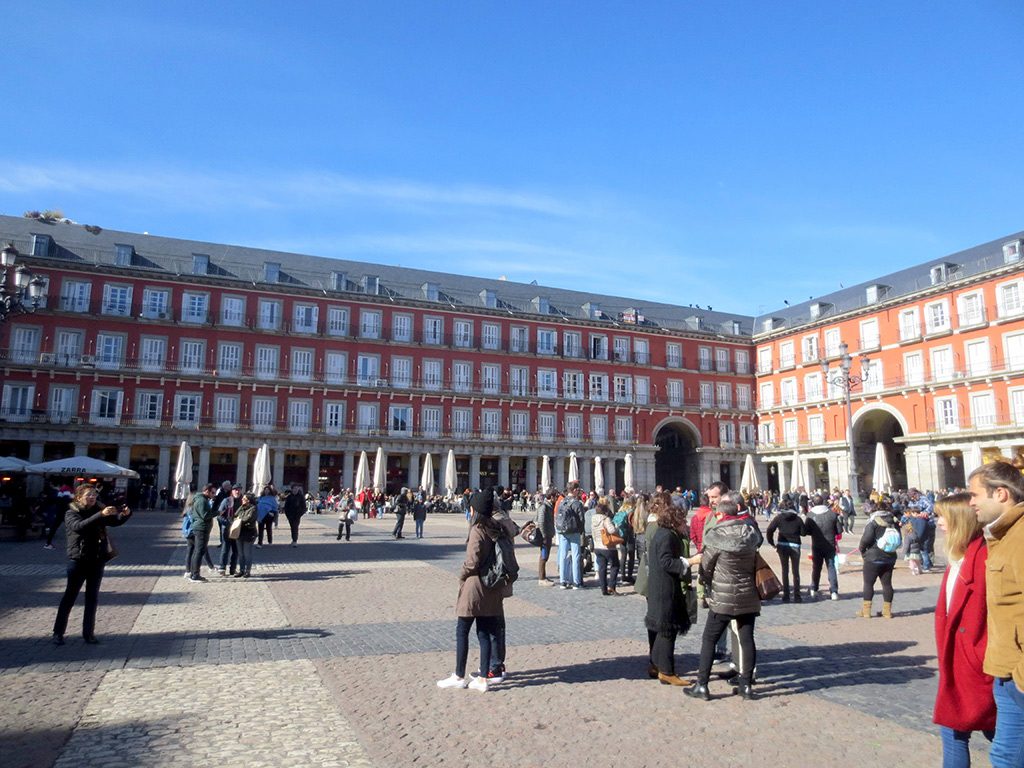
A little further along we reached the more photogenic Plaza Mayor. This enormous literal square dates to the 15th century and is lined with pleasingly uniform buildings. The plaza is accessed by tunneled arches on all corners. I remember visiting here in 2003, and the feel of the architecture is distinctly “Spanish”. The center of the square is empty save for a statue of King Philip III on a horse, cast in 1616 and moved to the plaza in 1848.
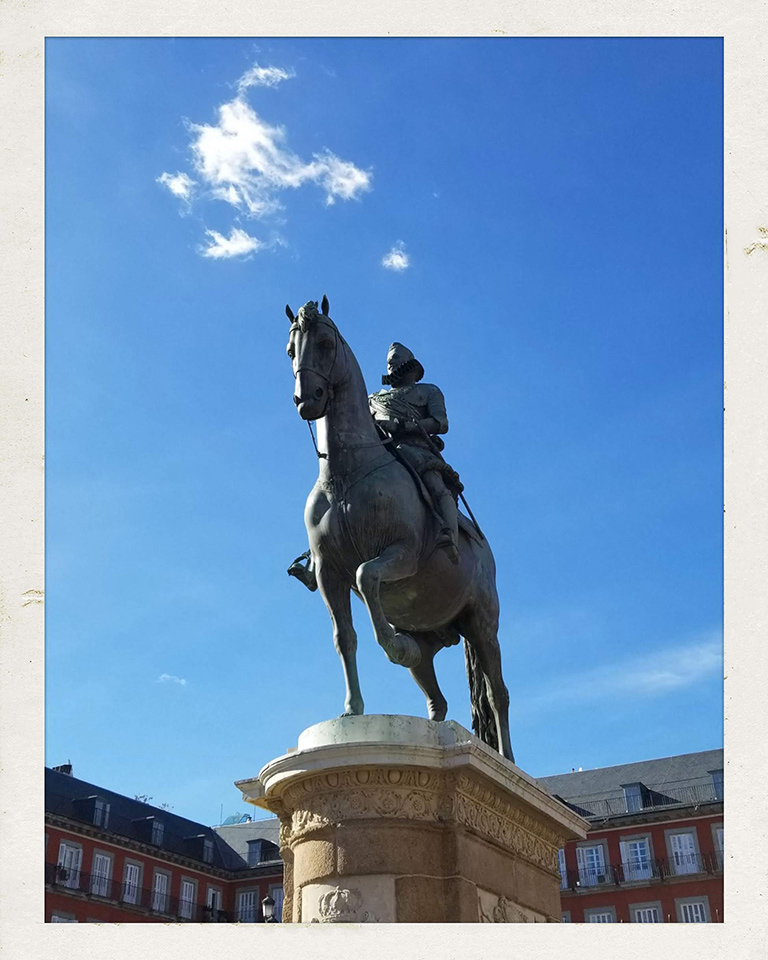
It is interesting to notice how little the square has changed since it was painted by Lorenzo Quirós around 1763.
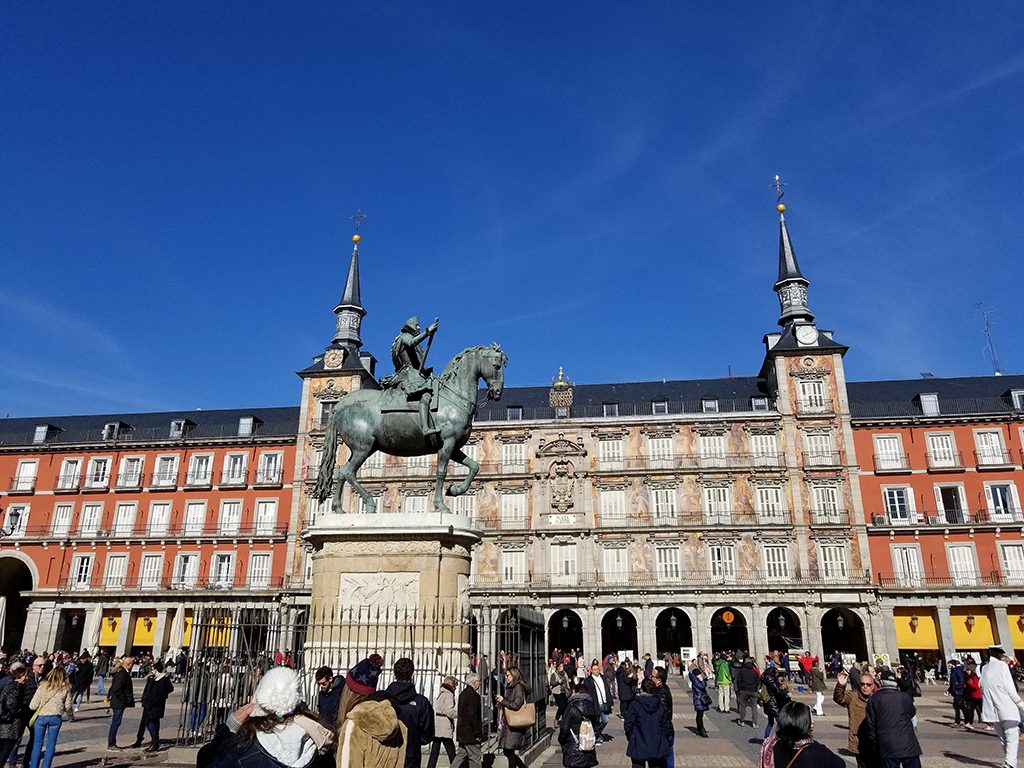
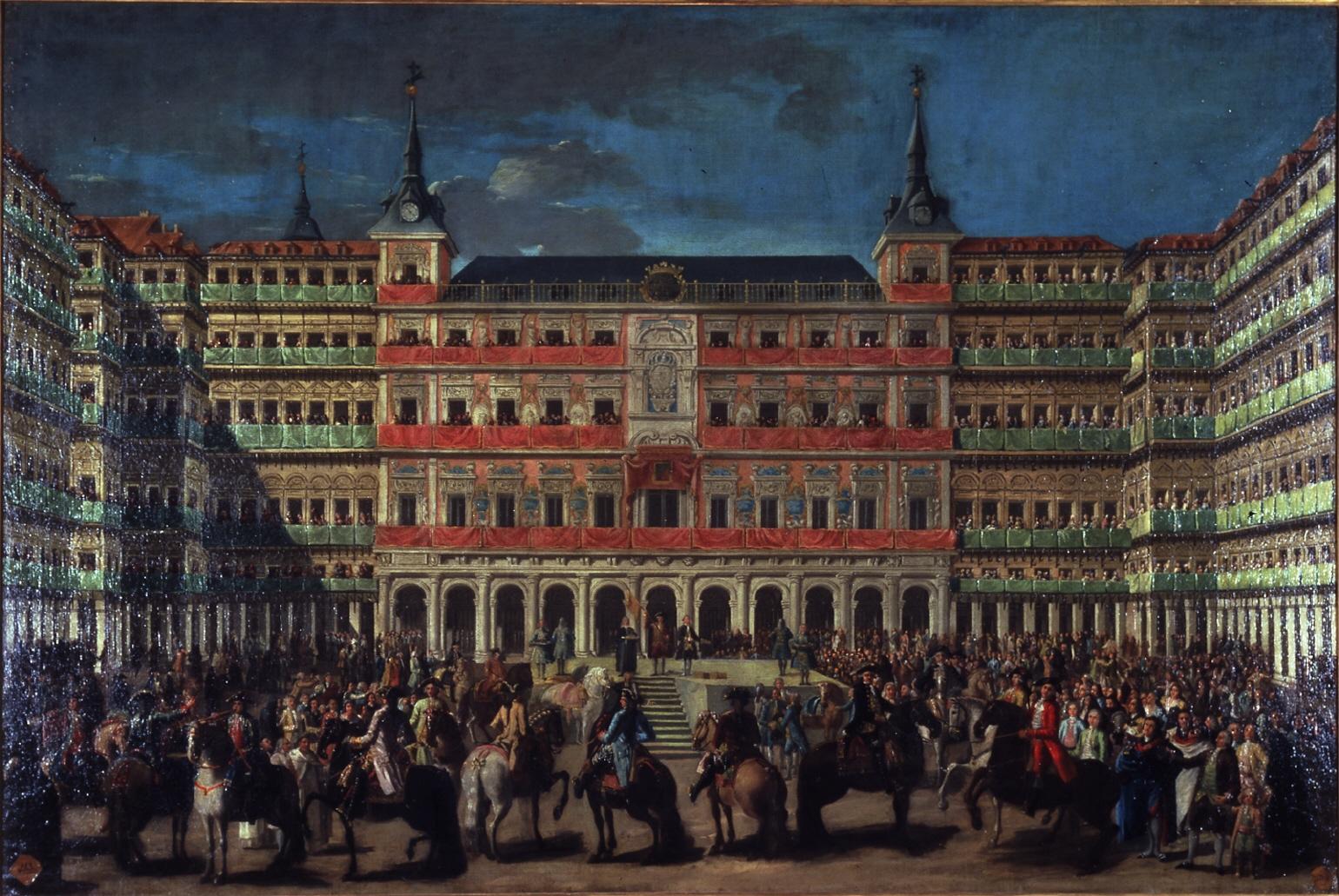
To access the pedestrian-only square you need to cut through one of the side street tunnels. Most are lined with small restaurants, tapas bars and shops.
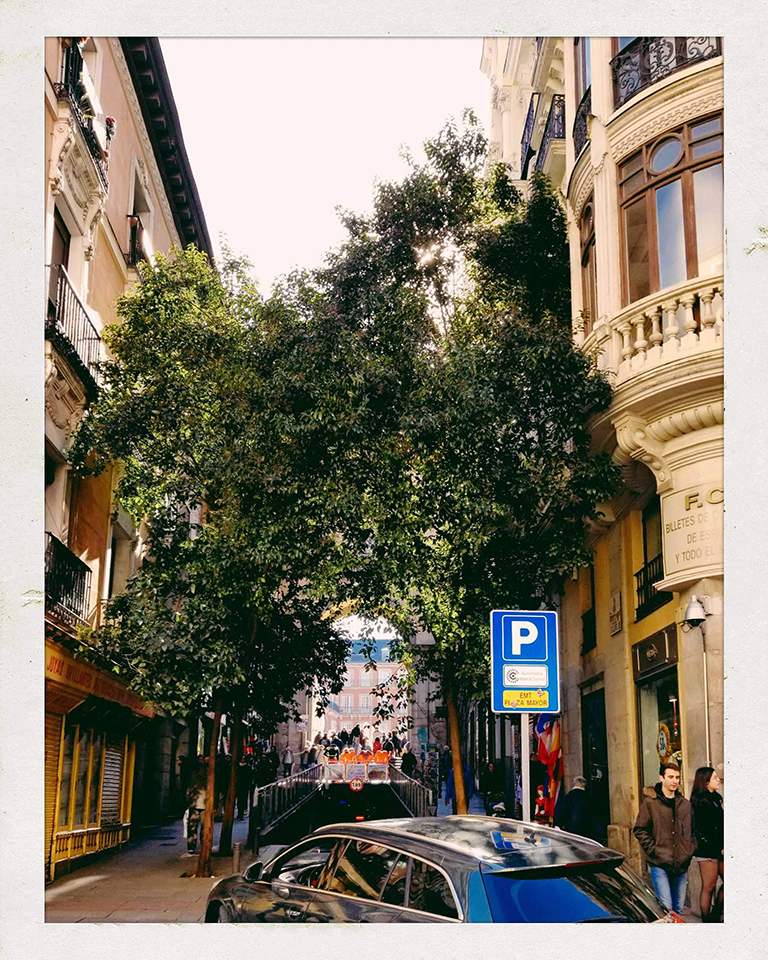
We had plans to grab lunch at the nearby San Miguel Market, a beautiful iron building fully refurbished as a “gastronomy market” in 2009. It is filled with small stalls selling tapas of all types.
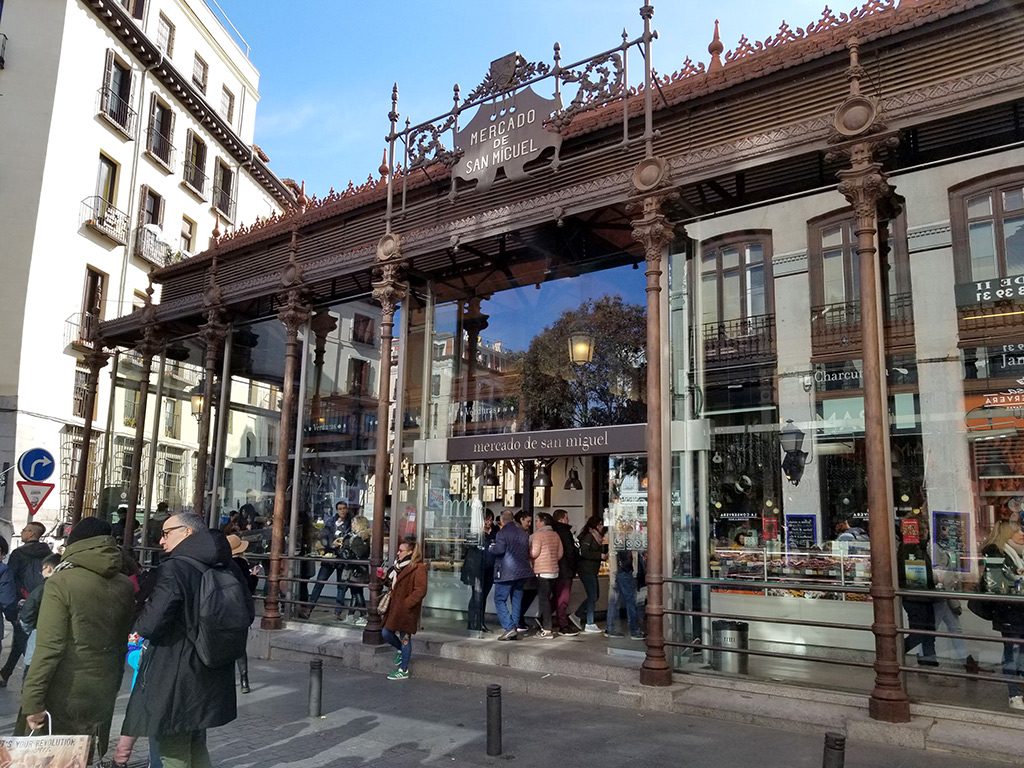
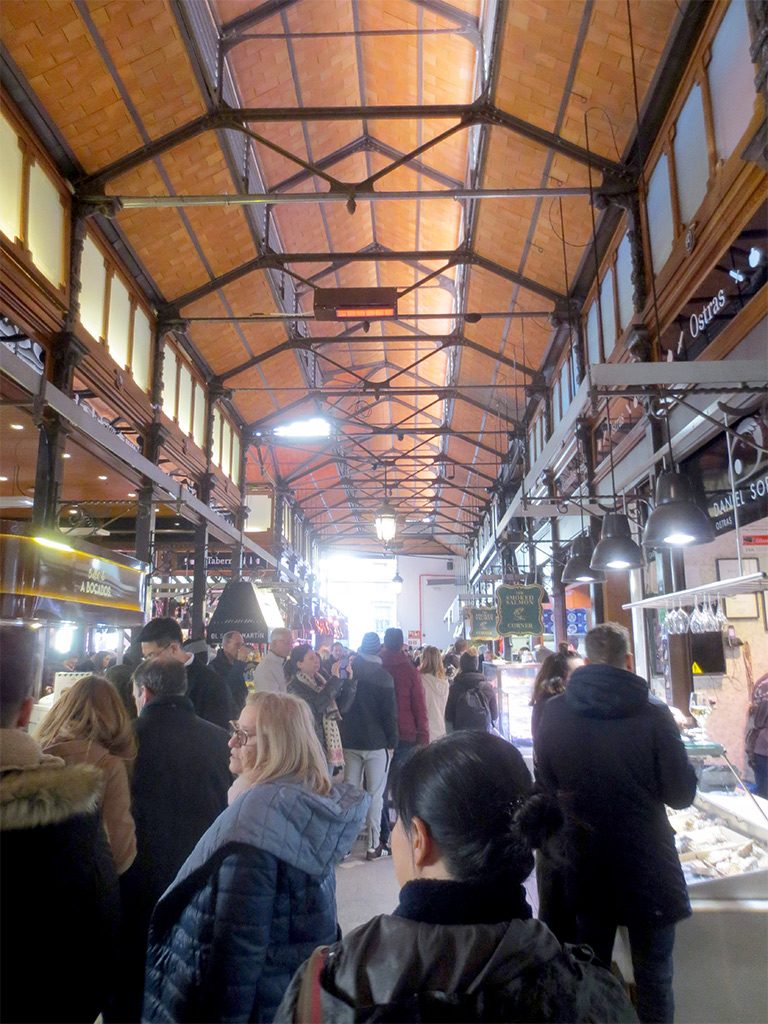
Unfortunately, it seems that everyone in Madrid who was not at a protest was also attempting to eat lunch at this market. Barely able to move let alone eat or drink, we took a few photos and escaped back towards Plaza Mayor.
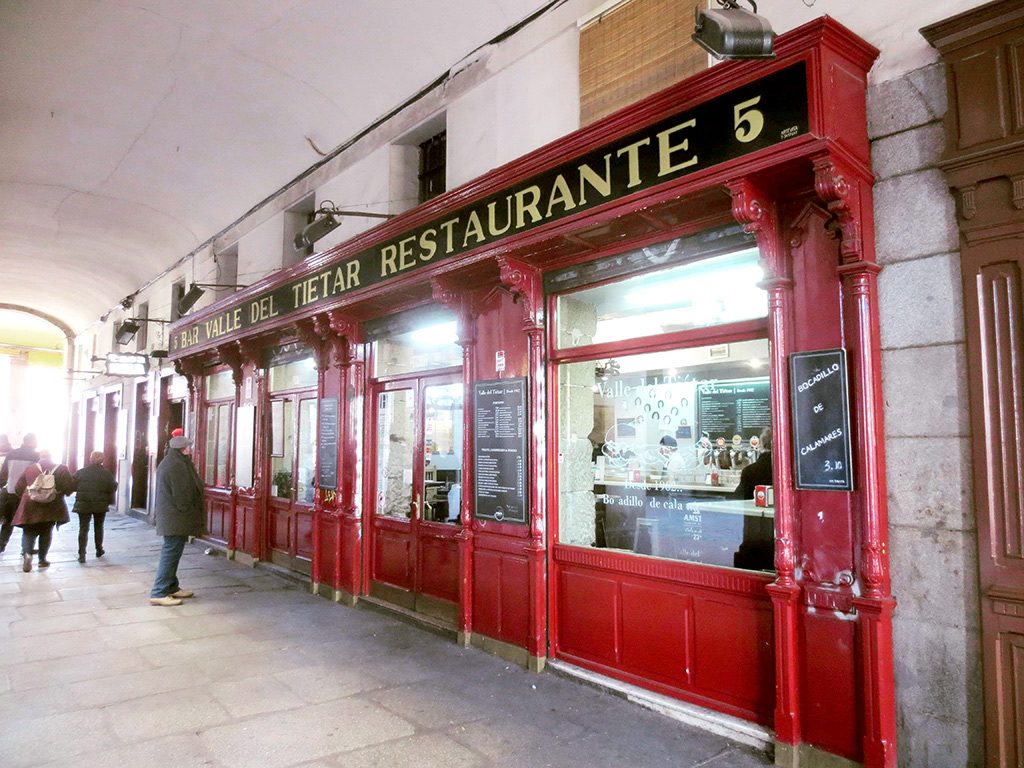
On a sidestreet we’d passed Bar Valle del Tietar Restaurante and noticed that it looked like a classic sort of place that advertised a Madrid specialty known as Bocadillo de Calamares (calamari sandwiches). We saw there were a few empty tables inside and decide to give it a go.
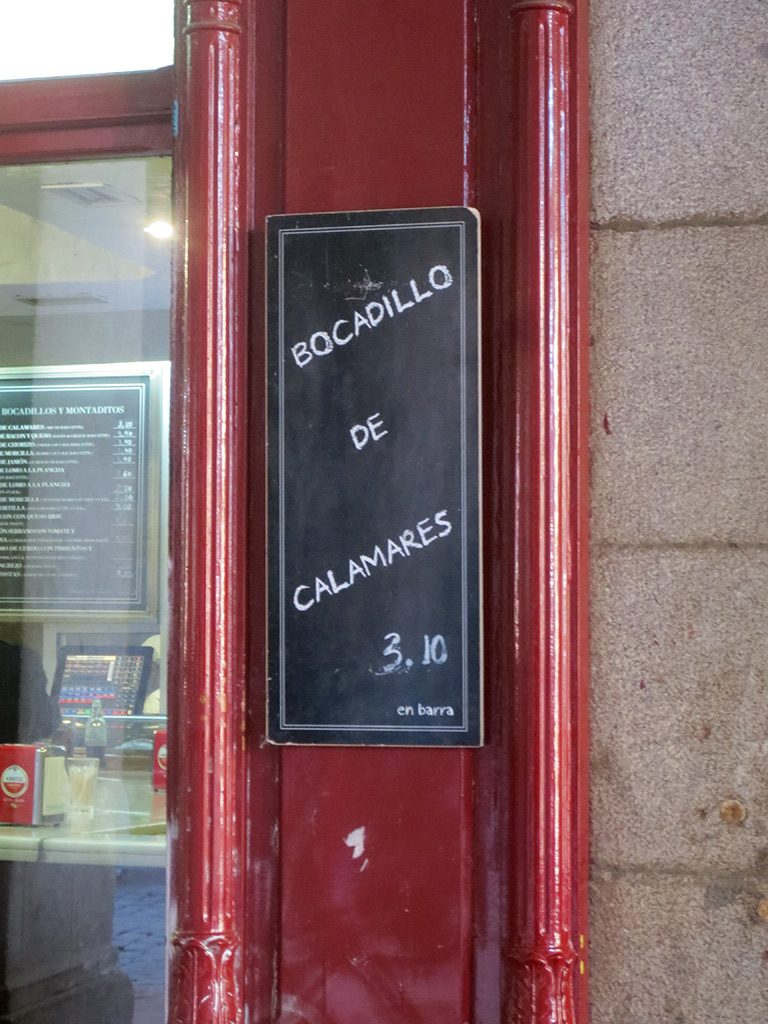
The choice was a good one. The place was filling up quickly with locals. We deciphered the menu and ordered a few things from the very efficient waitress: a bocadillo de calamares (of course), a Spanish tortilla (this is a type of egg and potato omelette, nothing to do with Mexican corn or flour tortillas) and a bocadillo de jamon. All three were straightforward implementations of classic casual Spanish food, and all three were delicious.
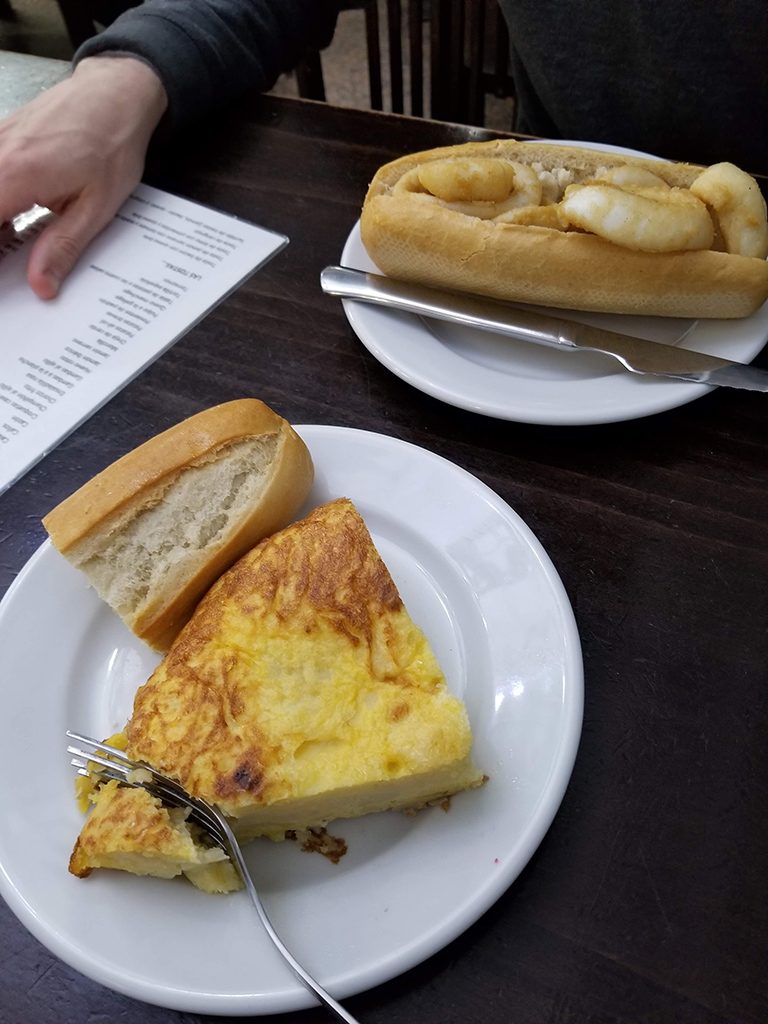
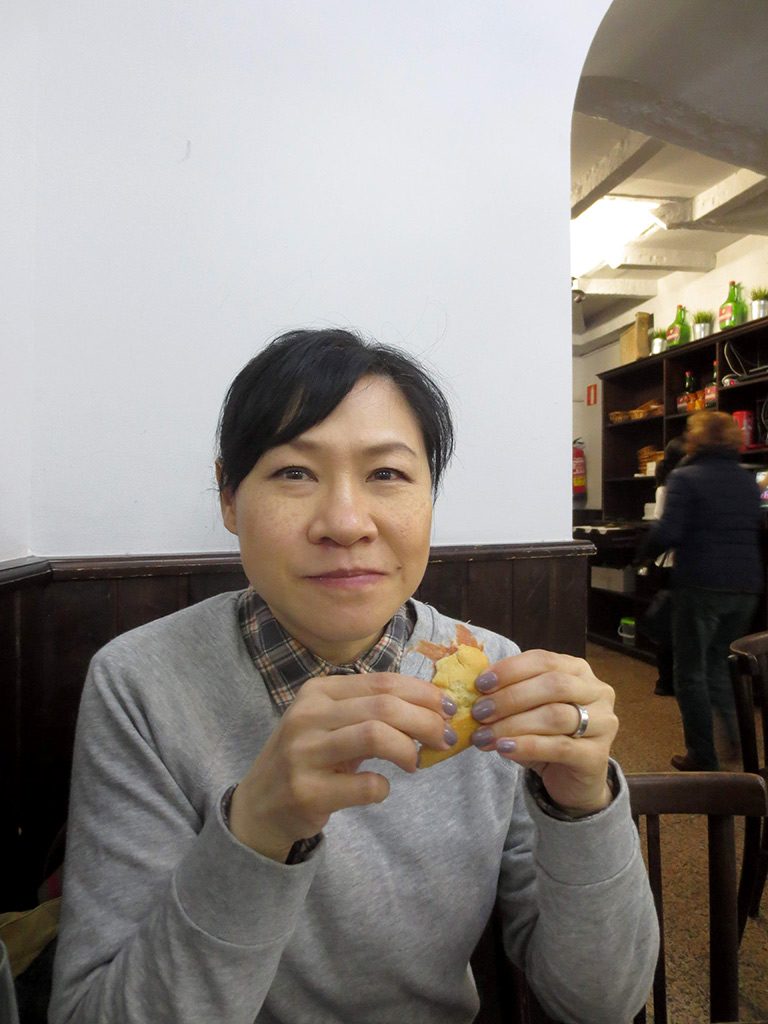
After lunch, we navigated the backstreets down to our hotel, passing through some attractive (and not so attractive) squares and many interesting small businesses.
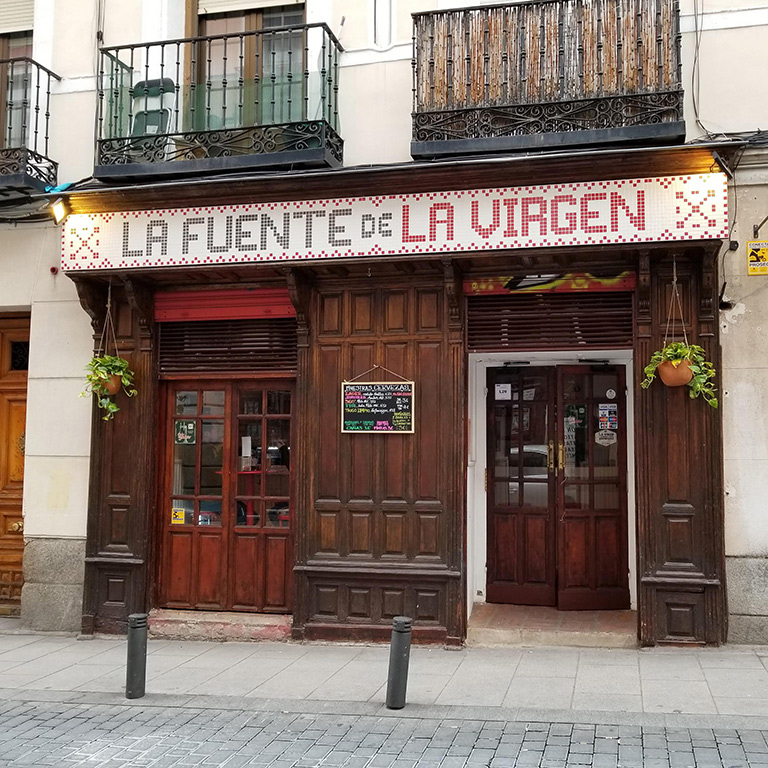
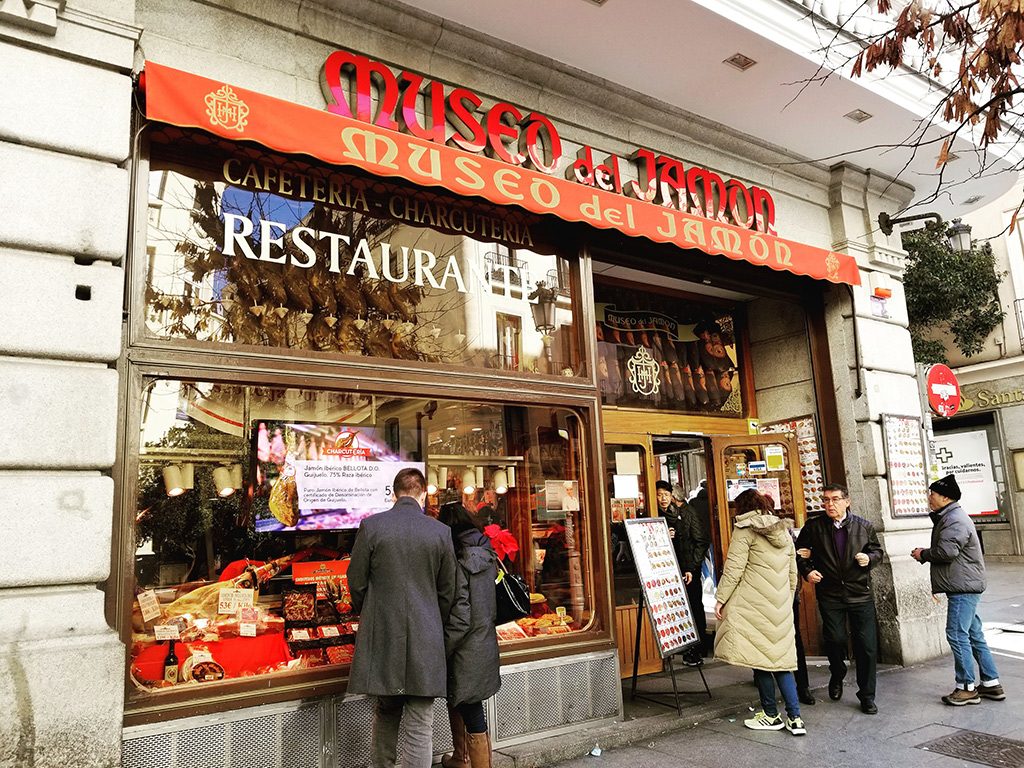
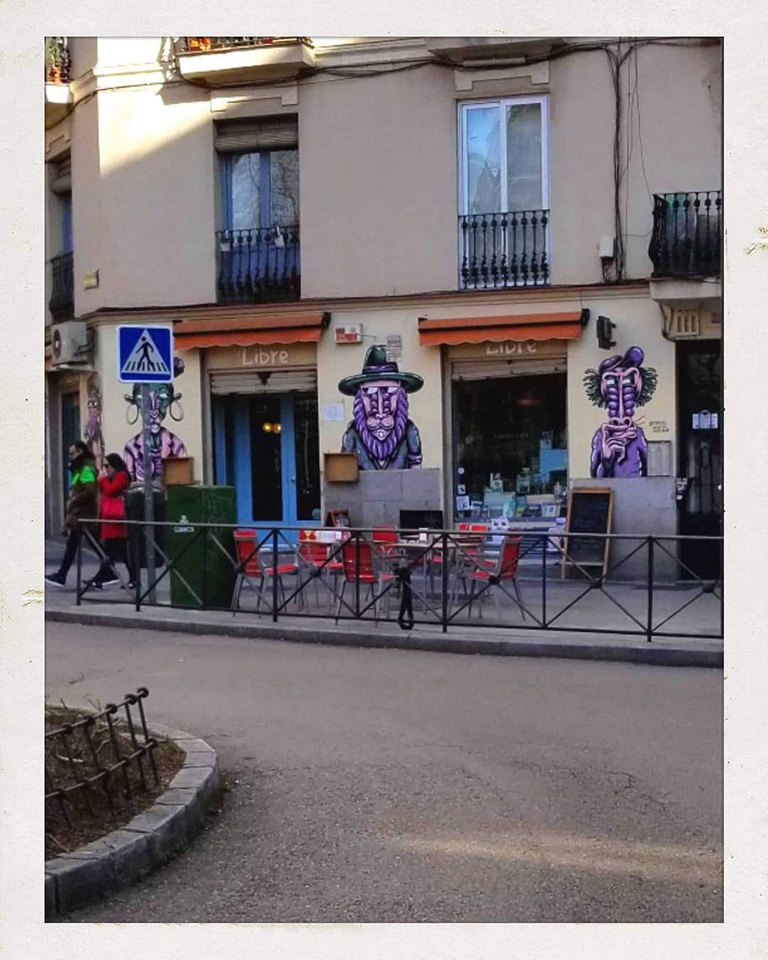
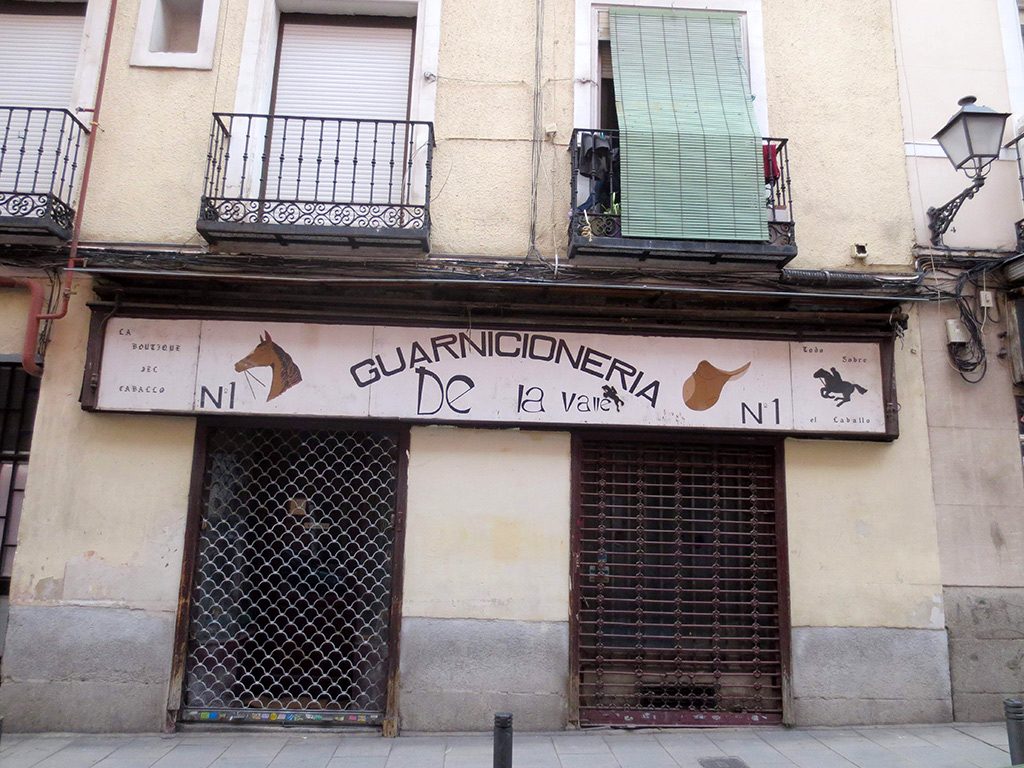
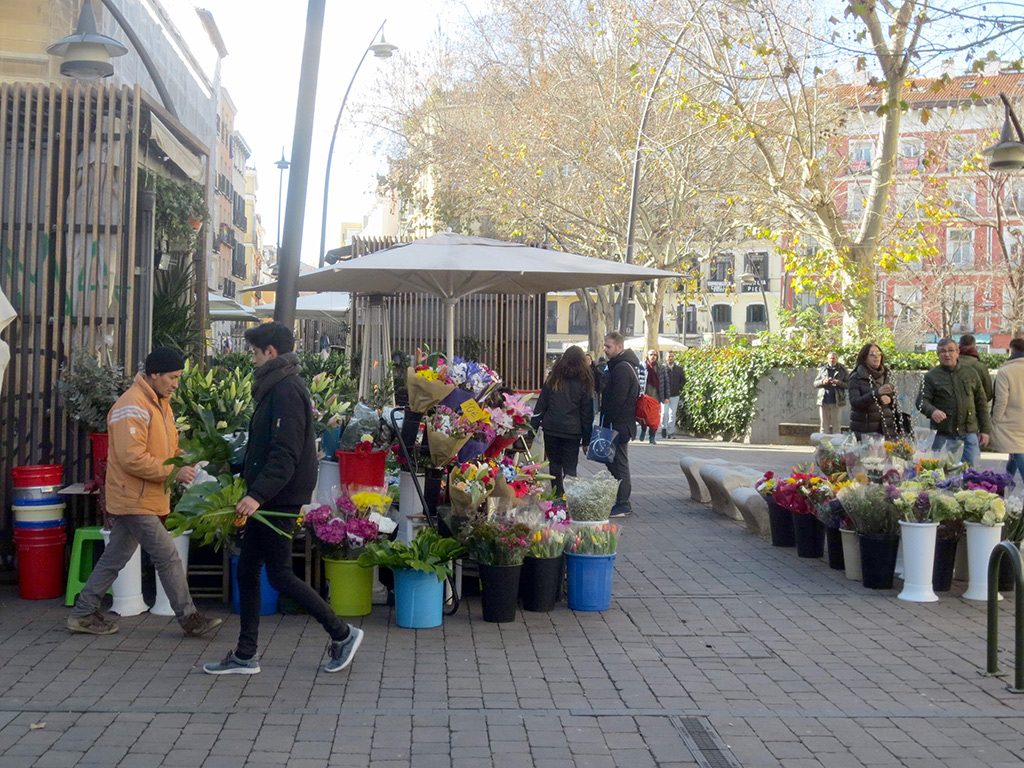
For much-needed caffeination we stopped at Hola Coffee, a friendly and trendy spot near our hotel. We enjoyed a couple nice beverages in a stylish space that reminded us of a mashup of Tandem Coffee and Neo Coffee back home in our Toronto neighbourhood.
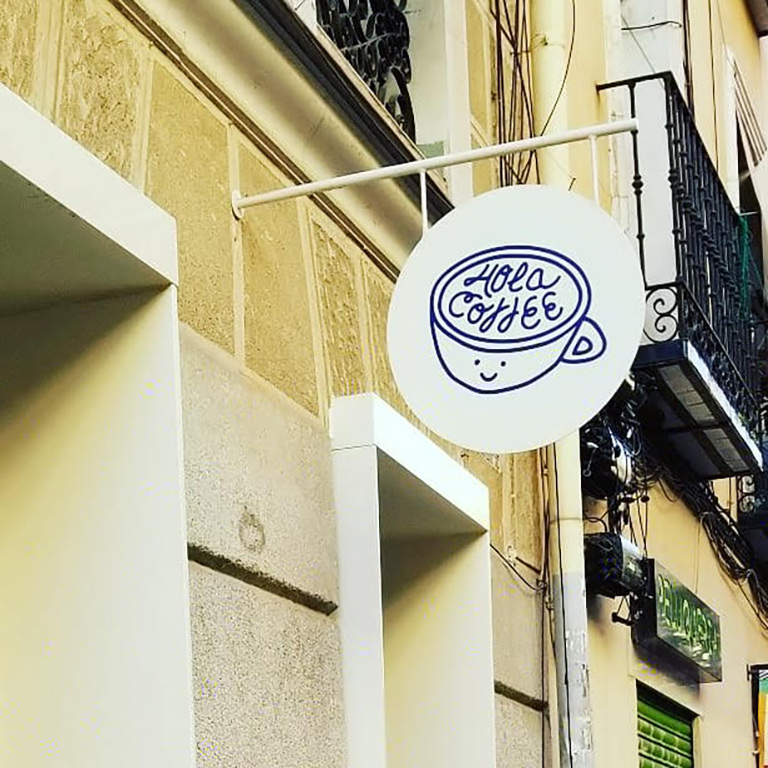
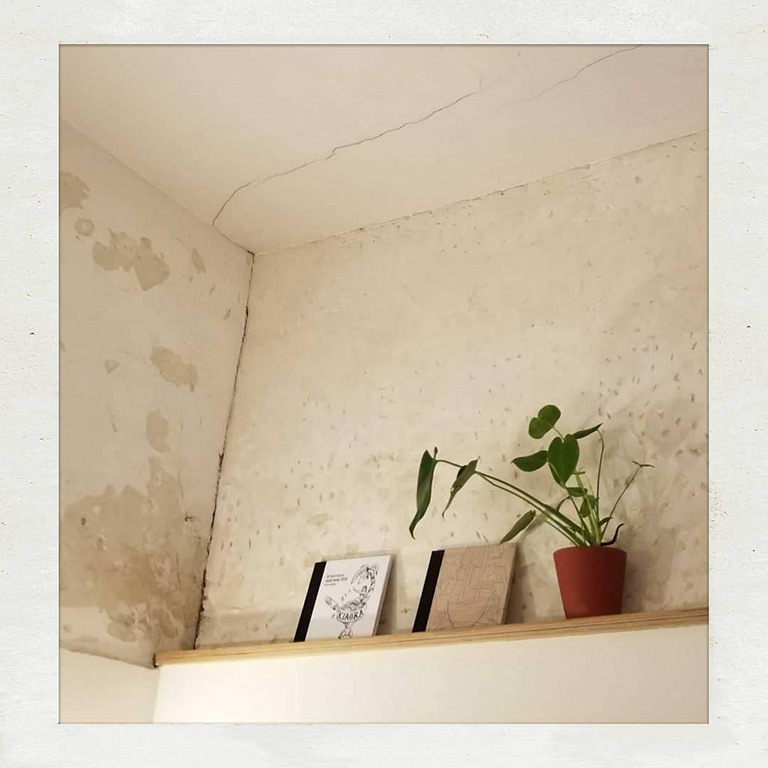
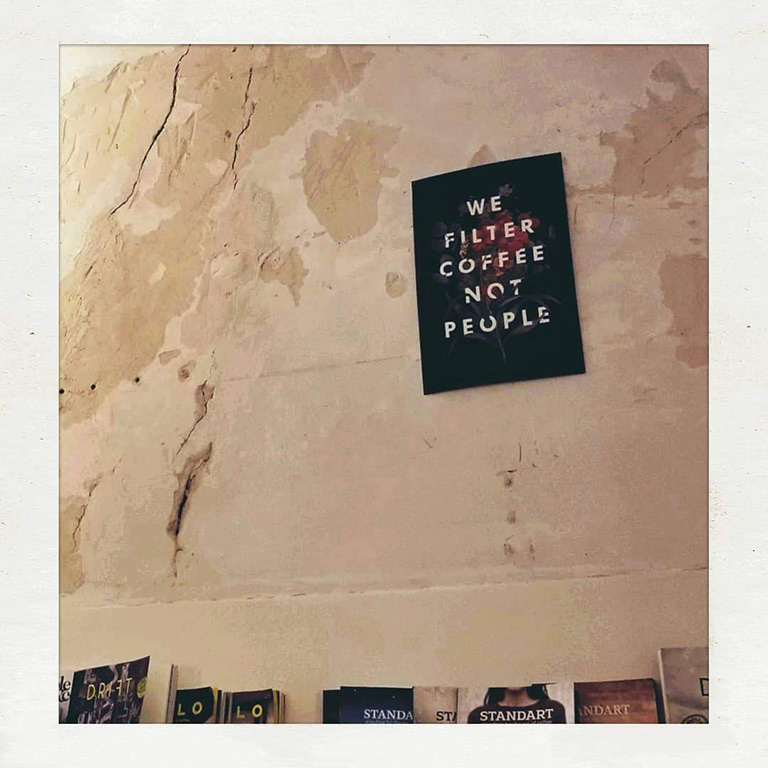
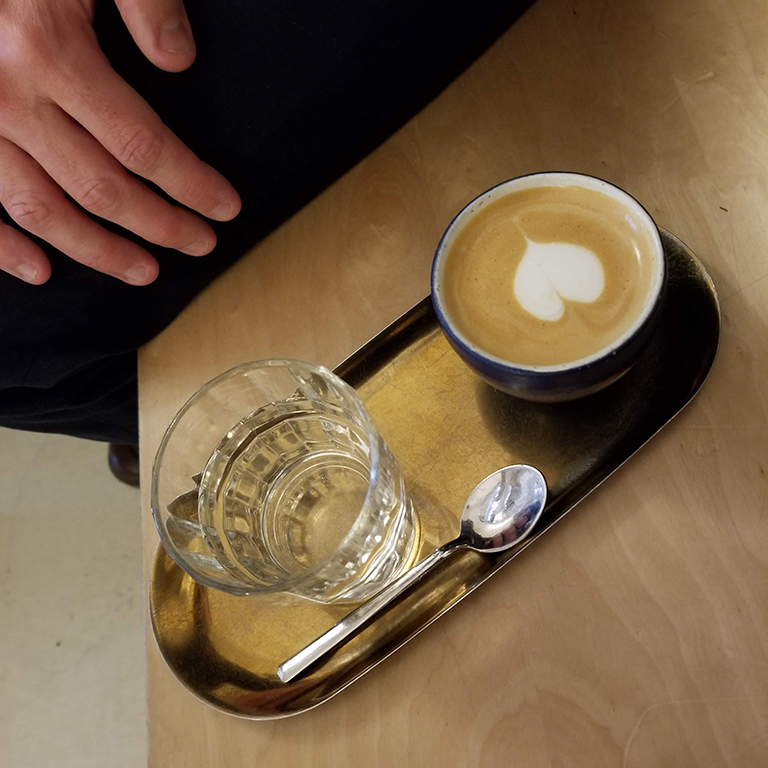
After a brief recuperation at the hotel, we headed out to our final meal of the trip — some trendy vegan food at Distrito Vegano. They serve tasty vegan burgers and hot dogs in a colourful space.
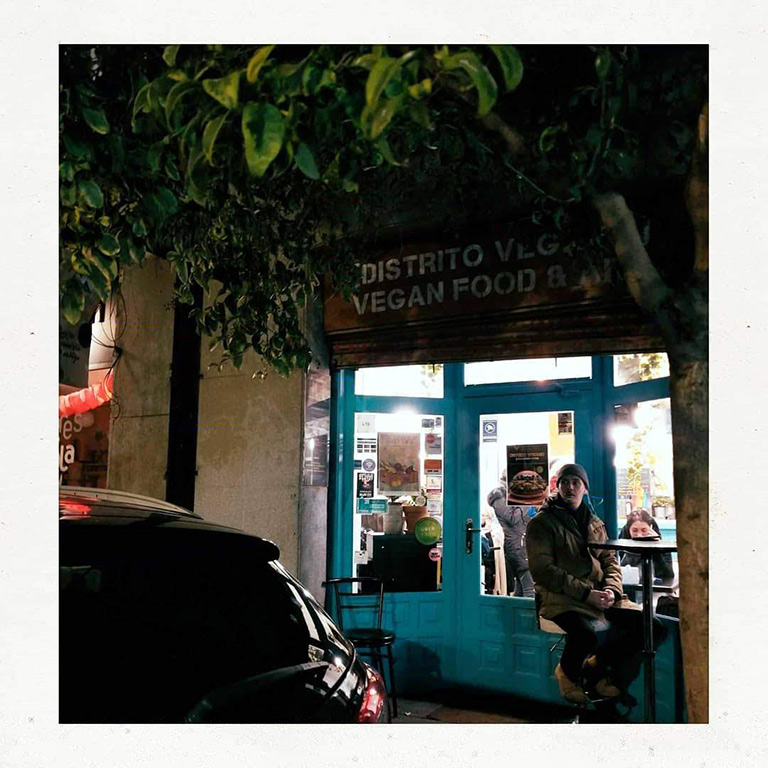
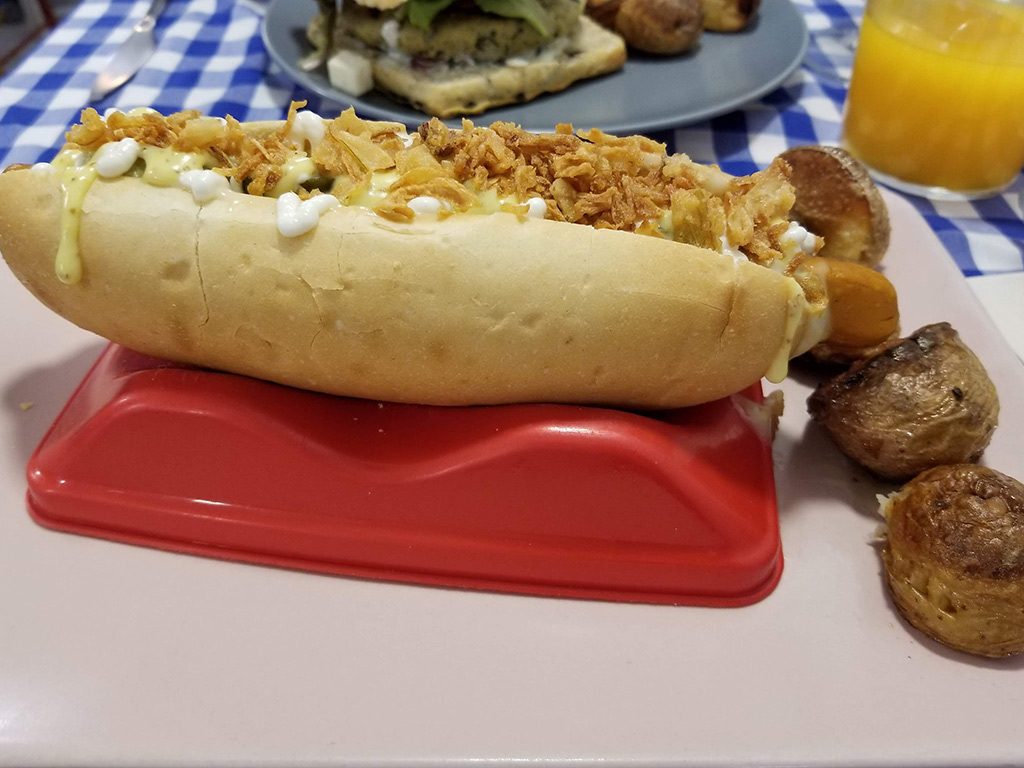
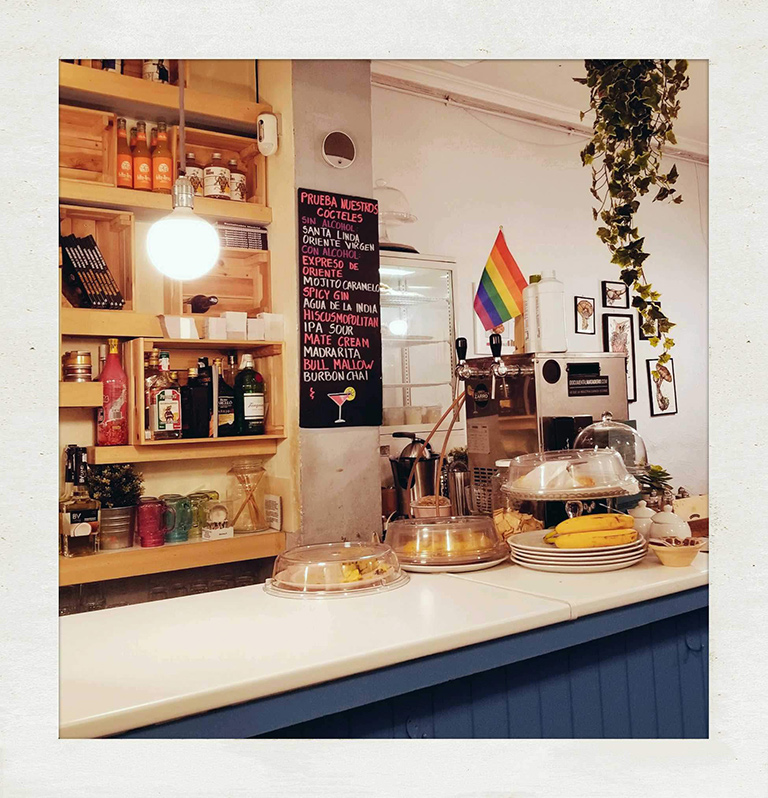
Our two days in Madrid were a blur but never fear — we’ll be back.